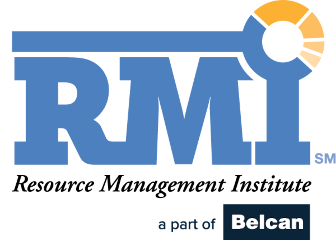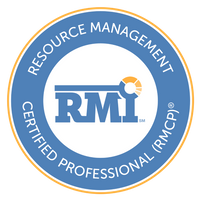Over the years, resource management has evolved from merely allocating resources into a comprehensive and critical function for any business. However, many organizations still rely on legacy tools such as spreadsheets and homegrown solutions for resource management.
According to a recent survey by Wellingtone conducted on 111 organizations across 29 countries, only 23% use a proper resource management solution.
While legacy solutions are inexpensive and require minimal effort, they cannot overcome the prevalent business challenges of 2021 and beyond. In the present times, market volatilities, increasing cost pressure, and skill shortages have wreaked havoc on business profitability and sustainability. Moreover, the COVID-19 outbreak has compelled many organizations to sustain these unprecedented conditions on a shrinking budget. So, to stay ahead in this global competition, businesses must manage their most expensive investment, human resources efficiently and intelligently.
This article explains how legacy tools lack functionalities in future-proofing these enterprises in the 2020s and why resource management is the need of the hour.
Legacy solutions that businesses are using for resource management
Here are some of the commonly used legacy tools for resource management:
1. Spreadsheet Based Resource Scheduling Tool
Usually, small to medium-size firms prefer the build over buy option and create a resource management solution using spreadsheets and macros. Although easy to develop, these tools can only meet their immediate business requirements. Additionally, these solutions are susceptible to human errors during reconciliation, causing erroneous data and spiraling effects on resource analysis.
2. Home-Grown Half-Baked Resource Scheduling Systems
To combat the limitations of spreadsheets, some firms started developing in-house resource scheduling solutions. However, these systems involved significant expenses in terms of overhead maintenance charges. Besides, these solutions are built by inefficient developers who lack specialized knowledge of resource management and designing complex software systems.
3. Windows Based Resource Scheduling Tools of the 1990s
Some businesses are still using resource scheduling tools developed in the 1990s that run on outdated technology windows, lotus notes, flat files, access databases, etc. Though initially designed to address resource scheduling problems of the ’90s, it fails to resolve the challenges of the 2020s.
4. Visual Scheduling Software with Basic Drag and Drop Capability
Over the last few years, the market witnessed an explosion of visual resource scheduling tools from several vendors with drag and drop. However, resource scheduling being just a part of the resource management process, these tools had limited planning capabilities to futureproof business against market volatilities.
Why are these tools inadequate for current and future business needs?
1. Easy to Develop but Difficult to Maintain
Spreadsheets and other home-grown tools are generally easy to develop and somewhat helpful to meet initial business requirements only. However, as businesses evolve and grow, these solutions lack the functionalities to meet their current and future needs. Moreover, these tools demand an in-house IT team to oversee the implementation and configuration, making them costly to maintain.
2. Paying High Price for Lost Market Opportunities
Outdated tools cannot respond to dynamic market conditions, resulting in the loss of new market opportunities for businesses. For example, suppose you are about to sign a new project to help you meet your long-term business strategy. These outdated tools are incapable of providing you with a clear picture of the viability of such an initiative using the existing resource constraints.
3. Unable to Forward Plan Future Project Requirements
These tools lack the capabilities to perform resource forecasting and capacity planning. Subsequently, businesses are unable to forecast resource excesses or shortages and take appropriate resourcing treatments proactively. Due to this limitation, most firms operate in a reactive mode, such as last-minute hiring activities causing project delays and cost overruns.
4. Not Designed for Efficient Utilization of Resources
To stay ahead of the competition, businesses must manage their most significant investment, i.e., resources, most intelligently. However, the legacy tools are not fundamentally designed to meet those requirements. In the absence of forecasting capabilities, organizations cannot improve profitable utilization and reduce resourcing costs that affect business sustainability.
5. Unsuitable for Matrixed Organization Structure
Over the years, many organizations have evolved into a matrix structure where employees have multiple reporting lines and are distributed across geographies. Although this structure allows efficient use of a centralized resource pool, it also brings its own set of logistic and management challenges causing conflicts and chaos. In addition, these custom-developed tools are not flexible in resolving the complexities of matrix organization structures.
6. Unable to Provide Real-Time Business Intelligence
To adapt to the evolving business dynamics caused by changing work priorities and demand volatilities, businesses must access real-time data. It enables informed decision-making that can improve the organization’s health index. Unfortunately, legacy tools cannot provide real-time BI with reports, dashboards, and analytics for timely actions.
Resource Management Software that future proofs business in 2021 and beyond?
To overcome these pertinent resource-related challenges, businesses must replace their current legacy tools with futuristic resource management software. It can scale up and expand to accommodate the business requirements of the 2020s and beyond. Besides, the software can help businesses reduce resourcing costs, maximize profitable utilization, and futureproof workforce against market volatilities and uncertainties.
Learn more about futuristic resource management and how it can help businesses stay competitive today and tomorrow. Read this Ultimate Guide to Efficient Resource Management by Saviom.

Mahendra Gupta is PMP certified with over 15 years of expertise in the workforce planning and resource management space. As a Project Consultant for Saviom Software, his experience has enabled many multinational companies across the globe to diversify their project portfolio and achieve strategic goals.




